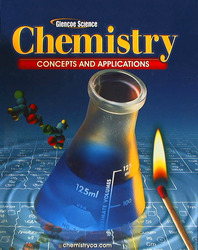 <a onClick="window.open('/olcweb/cgi/pluginpop.cgi?it=gif::::/sites/dl/free/0078617987/179001/ch11_chapter.gif','popWin', 'width=NaN,height=NaN,resizable,scrollbars');" href="#"><img valign="absmiddle" height="16" width="16" border="0" src="/olcweb/styles/shared/linkicons/image.gif"> (0.0K)</a> <a onClick="window.open('/olcweb/cgi/pluginpop.cgi?it=gif::::/sites/dl/free/0078617987/179001/ch11_chapter.gif','popWin', 'width=NaN,height=NaN,resizable,scrollbars');" href="#"><img valign="absmiddle" height="16" width="16" border="0" src="/olcweb/styles/shared/linkicons/image.gif"> (0.0K)</a> |
Spontaneous Ignition
Spacecraft move through space by rocket propulsion. A variety of engines are used to propel spacecraft, from the huge Saturn V rockets used to put the Apollo missions
into space to the attitude control thrusters that keep the spacecraft level while traveling. The lunar module descent engine burns a liquid fuel made of Aerozine 50, a 50/50 mixture of
hydrazine and unsymmetric dimethyl hydrazine, and the oxidizer nitrogen tetroxide. These propellants are storable and ignite on contact. The engine is restartable and can be controlled
with a throttle. This type of propulsion allows astronauts the ability to control their descent and to "hover" over the surface and change landing sites as needed. The amount of hypergolic
fuel required for the vehicle that lifted the Apollo astronauts off the Moon was so little that it fit in a corner of the vehicle and the fuel tank could have served as a chair. |
| Hypergolic propellants are fuels and oxidizers which ignite spontaneously on contact with each other and require no ignition
source. The easy start and restart capability of hypergolics make them ideal for spacecraft maneuvering systems. Also, since hypergolics remain liquid at normal temperatures, they do not
pose the storage problems of cryogenic propellants, such as liquid hydrogen and liquid oxygen. Hypergolics are highly toxic and must be handled with extreme care. The lunar ascent vehicle
requires 785 kg of propellants to be transported to the lunar surface, including 214 kg Aerozine and 571 kg of dinitrogen tetroxide (N2O4). A liquid hypergolic fuel
is the principle behind the rocket's attitude correction motors where the mixing of two liquids produce spontaneous combustion and a jet of gases. |
| | |
 <a onClick="window.open('/olcweb/cgi/pluginpop.cgi?it=gif::::/sites/dl/free/0078617987/179001/POWproblem_1.gif','popWin', 'width=NaN,height=NaN,resizable,scrollbars');" href="#"><img valign="absmiddle" height="16" width="16" border="0" src="/olcweb/styles/shared/linkicons/image.gif"> (0.0K)</a> <a onClick="window.open('/olcweb/cgi/pluginpop.cgi?it=gif::::/sites/dl/free/0078617987/179001/POWproblem_1.gif','popWin', 'width=NaN,height=NaN,resizable,scrollbars');" href="#"><img valign="absmiddle" height="16" width="16" border="0" src="/olcweb/styles/shared/linkicons/image.gif"> (0.0K)</a> | Liquid
hydrazine (N2H4) and dinitrogen tetroxide
(N2O4). The two chemicals ignite on contact
to release very large amounts of energy as heat:
2 N2H4(liq) + N2O4 (g) → 3 N2 (g) + 4 H2O(g) + heat
If 21.4 g of hydrazine reacts completely with dinitrogen tetroxide and the gaseous products are collected at 27°C in a 250.0 L tank, what is the pressure in the tank? |
| |
 <a onClick="window.open('/olcweb/cgi/pluginpop.cgi?it=gif::::/sites/dl/free/0078617987/179001/POWproblem_2.gif','popWin', 'width=NaN,height=NaN,resizable,scrollbars');" href="#"><img valign="absmiddle" height="16" width="16" border="0" src="/olcweb/styles/shared/linkicons/image.gif"> (0.0K)</a> <a onClick="window.open('/olcweb/cgi/pluginpop.cgi?it=gif::::/sites/dl/free/0078617987/179001/POWproblem_2.gif','popWin', 'width=NaN,height=NaN,resizable,scrollbars');" href="#"><img valign="absmiddle" height="16" width="16" border="0" src="/olcweb/styles/shared/linkicons/image.gif"> (0.0K)</a> |
Rocket propellants are the fuels and the oxidizers carried by
the rocket for propulsion. The fuel unsymmetric dimethylhydrazine
(UDMH) reacts with the oxidizer dinitrogen tetroxide in the
descent engine. When the two lightweight liquids react they
produce the gaseous products nitrogen, water vapor and carbon
dioxide according to the equation:
(CH3)2NNH2 (l) + N2O4 (g) → 3 N2 (g) + 4 H2O(g) + 2 CO2(g).
Determine the volume of product gases if 42.8 g of unsymmetric dimethylhydrazine reacts with an excess of dinitrogen tetroxide at a temperature of -10.0°C and a pressure of 0.00600
atm.
|
 <a onClick="window.open('/olcweb/cgi/pluginpop.cgi?it=gif::::/sites/dl/free/0078617987/179001/webLinks.gif','popWin', 'width=NaN,height=NaN,resizable,scrollbars');" href="#"><img valign="absmiddle" height="16" width="16" border="0" src="/olcweb/styles/shared/linkicons/image.gif"> (1.0K)</a> <a onClick="window.open('/olcweb/cgi/pluginpop.cgi?it=gif::::/sites/dl/free/0078617987/179001/webLinks.gif','popWin', 'width=NaN,height=NaN,resizable,scrollbars');" href="#"><img valign="absmiddle" height="16" width="16" border="0" src="/olcweb/styles/shared/linkicons/image.gif"> (1.0K)</a> |
Useful Web Site:
Moon Race 2001 |
|





